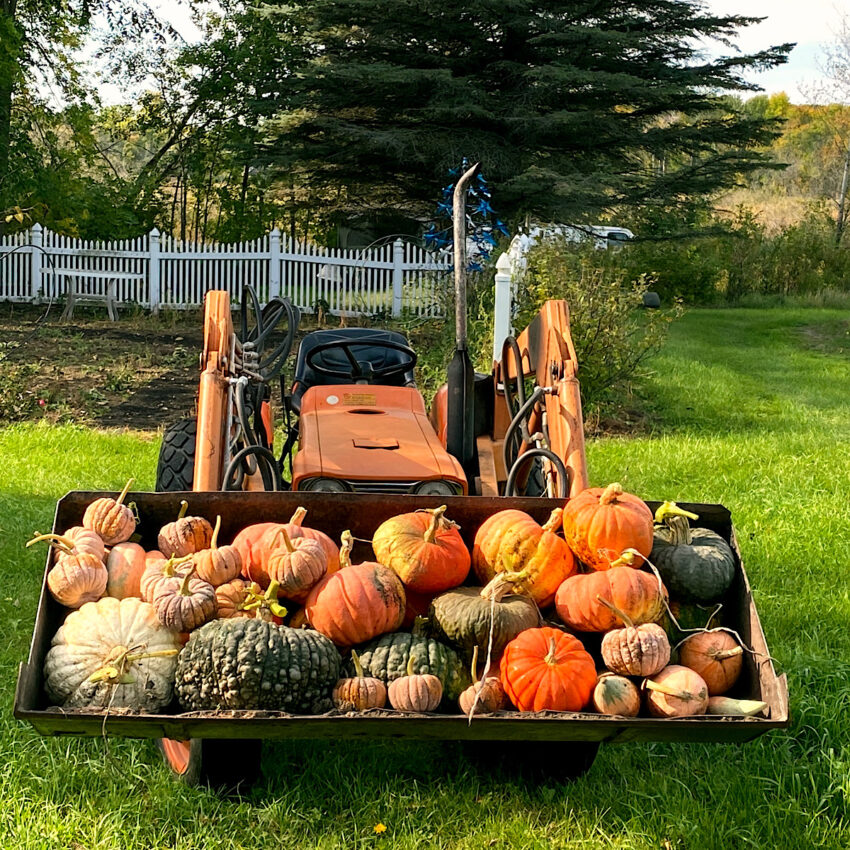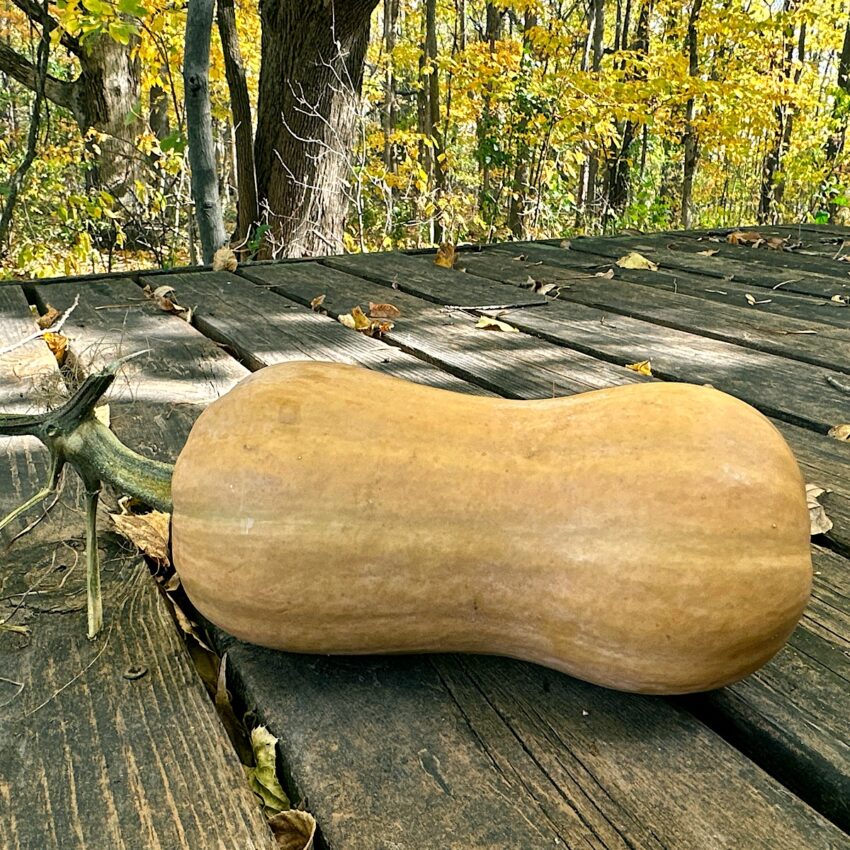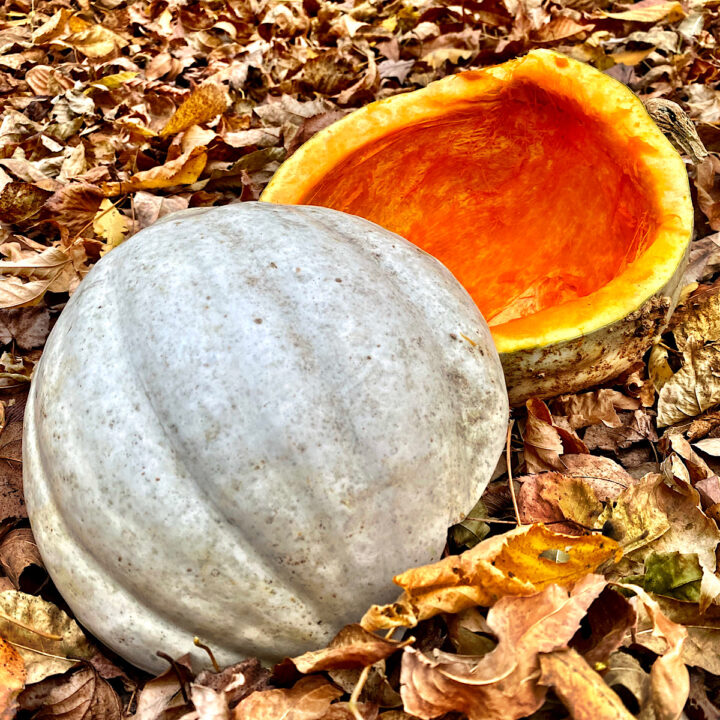Love cooking Italian food? Winter squash is one of the more important vegetables to Italian cuisine. The tastiest traditional Italian winter squash varieties aren’t available in-store however, so you need to either grow them yourself or find them at select farmers’ markets.
With this guide, I’ll help you discover the best Italian squash varieties, and how to cultivate them in your Italian kitchen garden.

Jump to: Great Italian Squash Varieties | Growing Tips | Cooking with Italian squash
This post may contain affiliate links. As an Amazon Associate, I also earn from qualifying purchases. You can read our disclosure information here–
The Importance of Squash to Italian Cooking: A Little History
Like many other classic Italian vegetables—notably, popular Italian tomatoes—squash isn’t from Italy at all.
Most winter squash varieties favored in Italian cooking actually hails from the Americas, specifically what is now the southern USA and northern Mexico. Indigenous peoples there domesticated it thousands of years ago,
By the time squash of the genus Cucurbita arrived in Italy in the 16th century (after the discovery of America), the Italians were already familiar with this “type” of vegetable. They’d had access to gourds (genus Lagenaria), which are native to Africa, for around 2000 years as that point.
Like gourds, squash (called zucca) was initially considered a food for the poor: it was easy to grow and could be stored all winter.
Eventually, though, the higher classes caught on, particularly in the Renaissance era. Nowadays, the Po Valley region, which is known for agriculture in general, is the most “squashy” area in Italy.
If you’re planning on cooking Italian cuisine, be sure and grow some winter squash in your Italian kitchen garden. Not in the least because traditional varieties aren’t available in supermarket (despite their fantastic flavor)!
6 Fantastic Italian Winter Squash Varieties
Given this vegetable’s long history in the Italian kitchen, it’s not surprising there are some fantastic Italian winter squash varieties to choose from.
Most of the popular Italian varieties are from the north, particularly the Emilia Romagna province or close by. They aren’t quite as common in Southern Italy.
The #1 Italian winter squash variety is probably Marina di Chioggia, also known locally as zucca barucca. It originates from Chioggia, a small town next to Venice, where in its roasted form it has been a staple street food for over 300 years.
Marina di Chioggia has sweet, dry flesh with nutty undertones. It has been my favorite for years, and I make sure and include it in our gardens.
Seeds for the Marina di Chioggia variety have are becoming harder to find however. This year (2024) I purchased seeds from Baker Creek Seeds.

Other fantastic Italian (heirloom) winter squashes include:
- Piena di Napoli: also known as zucca lunga (long squash). Basically an XXL butternut, perfect for soups and pasta.
- Berrettina Piacentina: from the province of Piacenza. A grey, slightly warty variety with sweet flavor that’s perfect for roasting.
- Tonda Padana: a relative newcomer that came to Italy after WWII. Round with pretty orange and green stripes. Locally popular as a Halloween pumpkin, but the flesh and seeds have excellent flavor.
- Cappello del Prete: grey with a turban shape (its name means “priest’s hat”). Considered ideal for pasta and gnocchi.
- Berrettina di Lungavilla: another Po Valley heirloom, which nearly went extinct at one point. A grey turban variety with dry flesh and sweet flavor.
- Violina Rugosa: literally means “warty butternut”. The flesh is dense and sweet, perfect for anything from risottos to stews.
These Italian squash varieties can be a little difficult to find. My favorite seed catalog for squash is Bakers Creek Seeds, but you might need to order from a specialized online store like Seeds of Italy.

How To Grow Italian Winter Squash
Seed Starting
Unless you live in a warm climate, you’re probably best off starting your Italian winter squash seeds indoors. As with many vegetables, this is best done in seedling trays or small pots 4-6 weeks before your local last expected frost date.
Place the seedlings in a warm and light spot, keeping their soil lightly moist. Once the soil temperature is at 60 °F and your baby squash plants have a few good leaves, you can start hardening them off before moving them outside.
Tip: you can expect up to 5 squashes per plant, and they can be big. Don’t plant too many vines or you’ll be begging people to take your harvest off your hands by the time the season finishes! I’ve seen this happening to many beginner gardeners.
Can You Grow Italian Squash In Containers?
If you have space to accommodate a big container, you can. Try opting for at least 5 gallons, because squash is a vigorous vining plant that can grow dauntingly large.
You could also try sending the vine up a strong vertical trellis system. The leaves are quite pretty trailing over a large pot, but the squash themselves can become too big and heavy. You could also try some of the baby squash for Italian kitchen gardens.
Take a look at my posts on container gardening to find everything you need to know about successfully growing vegetables like winter squash in pots!
Support
Whether you decide to trellis your squash vines or not is a matter of personal preference. They usually do well enough when allowed to just sprawl across the garden floor, but not everyone has the space to allow this.
If you’re short on space, or if you’re worried about rot or pest damage from the vines being too close to the ground, have a look at the post on vertical gardening for ideas on how you could go about trellising squash. Remember that vines laden with pumpkins can be very heavy, so you’ll need a sturdy solution.

Harvest
If all went well (and it should, squash is an excellent choice for beginning veggie gardeners), you can expect your Italian winter squashes to be ready for picking between 85-120 days after germination. The exact time depends on the variety you’re growing and your local climate.
Look up what the squash you chose looks like when ready to pick. Aside from color, other signs of ripeness include:
- The skin becomes tough and difficult to pierce with a fingernail
- The stem attaching it to the plant will turn brownish
- Feels heavy for its size
- Sounds hollow when tapped
You can use gardening shears to remove the squash from the plant, leaving an inch or two of stem attached.
Troubleshooting
Although winter squash is easy to grow, there’s always a chance you’ll run into issues. Luckily, most of them can be corrected and the plant (plus your harvest) saved.
Here are some common problems with squash:
- Bugs: yep, unfortunately squash plants have their own pests, called squash bugs. They can also be infested by vine borers or aphids. A combination of manual removal and organic control methods like insecticidal soap should help.
- Nutrient deficiency: squash vines are vigorous growers, so they do need plenty of nutrients. They definitely appreciate some compost or slow-release fertilizer in order to prevent nutrient deficiencies, which can cause symptoms like yellowing foliage.
- Watering: if you’re growing your plants in containers, keep an eye on them. They’ll dry out a lot quicker than vines grown in full soil.
Cooking With Italian Winter Squash
Unsurprisingly given what we know about the Italians’ love for pumpkin and squash, there are some traditional recipes out there that have weathered the ages. Take cappellacci di zucca, butternut squash-stuffed pasta with nutmeg from Emilia-Romagna, which was already hugely popular in the Renaissance era.
Or maybe you prefer tortelli di zucca, a sweet ravioli variety from Lombardy stuffed with pumpkin, crumbled amaretti biscuits, and mostarda (candied fruit with mustard syrup).
Whatever recipe you use your homegrown Italian winter squash for, you’ll be eating a piece of history!
Some of my favorites include:
- Peperonata with butternut squash
- Lasagna in spaghetti squash
- Puttanesca on spaghetti squash
- Spaghetti squash with sundried tomatoes
Storage & Freezing
If there’s one crop known for its sometimes slightly problematic productivity, it’s squash. Even if, as I recommended, you make sure not to plant too many, you might end up with a LOT of pumpkin.
What to do? Fear not: you can store winter squash for ages. A freshly picked pumpkin should be cured in a warm and dry spot for a week, after which you can move it to a cool and dry place like a garage, basement, or root cellar. It’ll last for months here as long as you keep moisture out.
Storage in the fridge can work too, although I’d be impressed if you managed to fit something like a ‘Piena di Napoli’ in yours! Make sure the crisper drawer is set to low humidity (it has a vent to regulate this) and your harvest should last for a few weeks to a few months.
If you’ve already cut into a squash or just don’t have the space, freezing is a good option. You can prepare something like pumpkin soup, candied pumpkin, pumpkin butter, roast pumpkin or stew first and freeze, or you can just cut the squash into cubes and freeze those. Place them on a baking try without the cubes touching, wait until they’ve frozen, and then bag them up.

Oh, and please don’t throw out the seeds. They’re so good, and they last for ages! Roast those babies with your favorite spices for a fantastic homemade snack.
If you like my articles about cooking and gardening, subscribe to my weekly newsletter, where I share free recipes and gardening tutorials.
Sources


Leave a comment